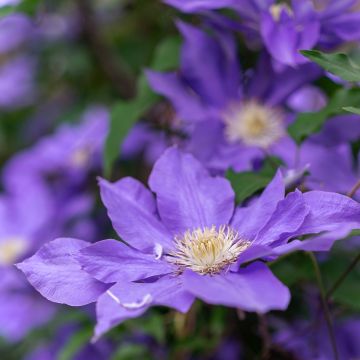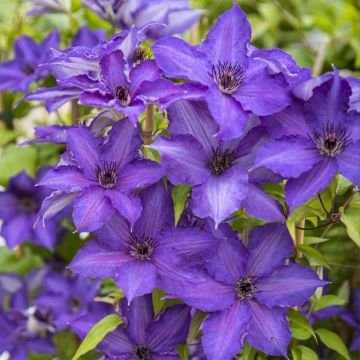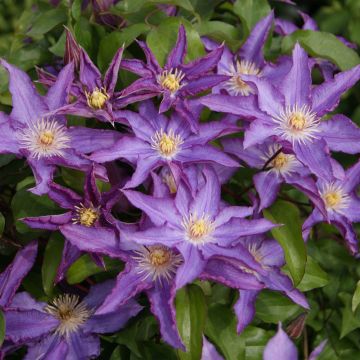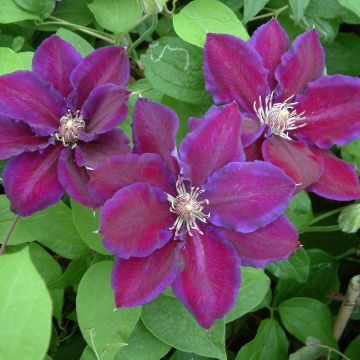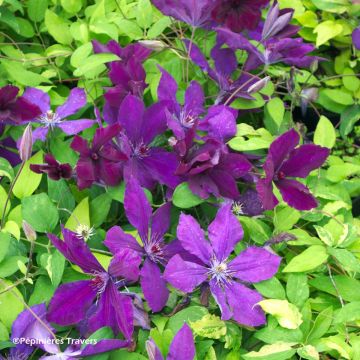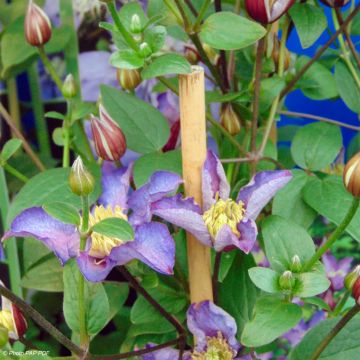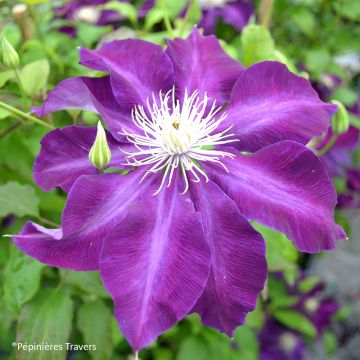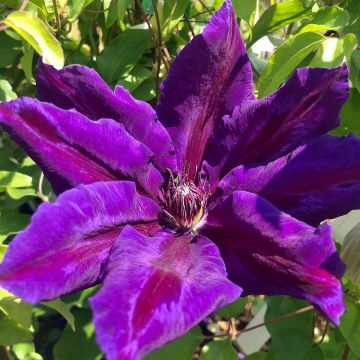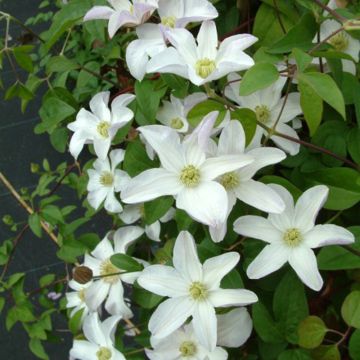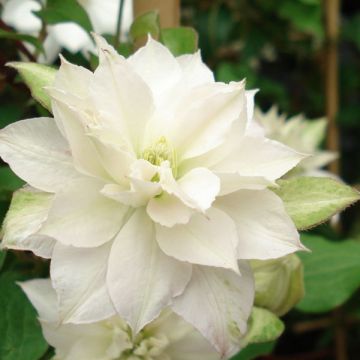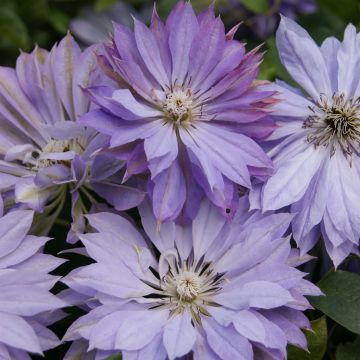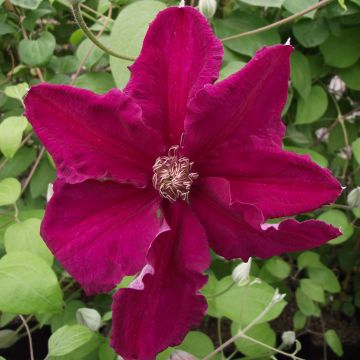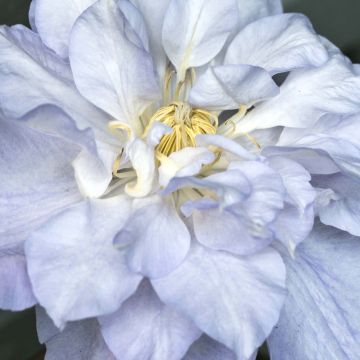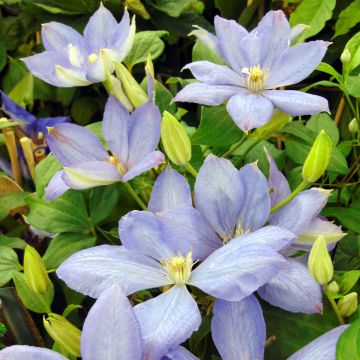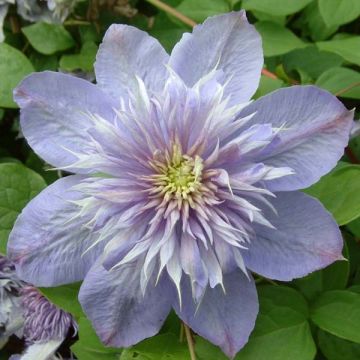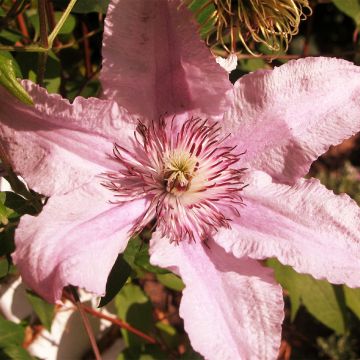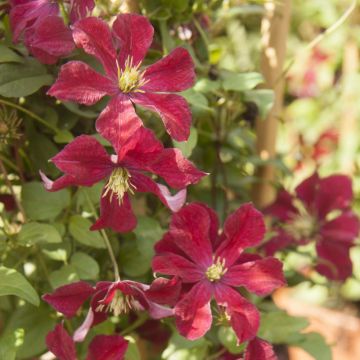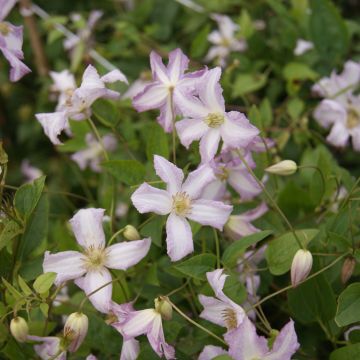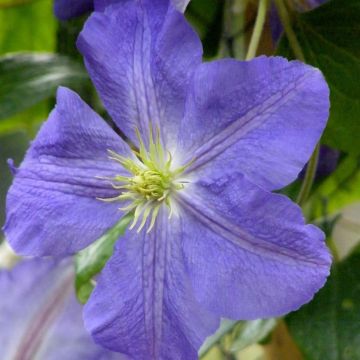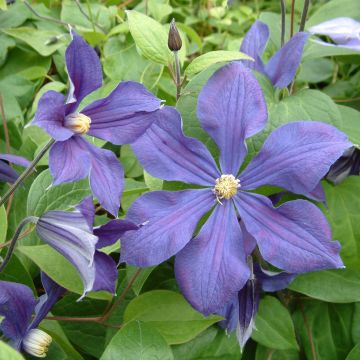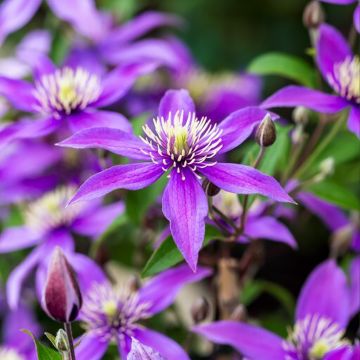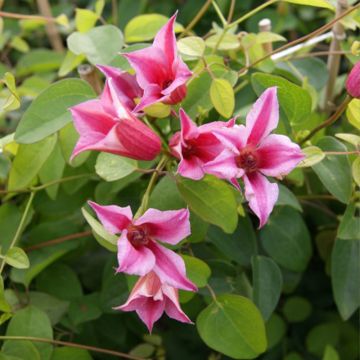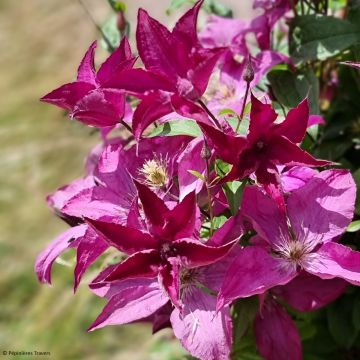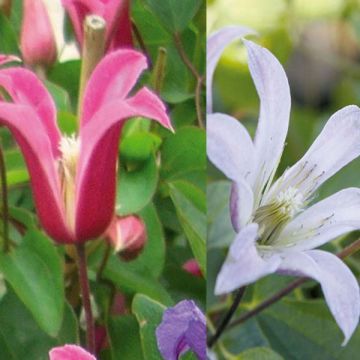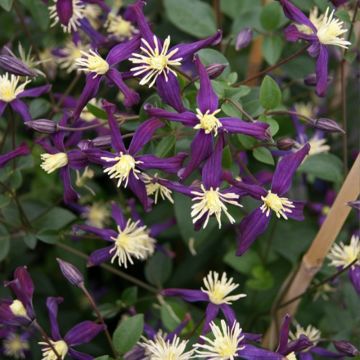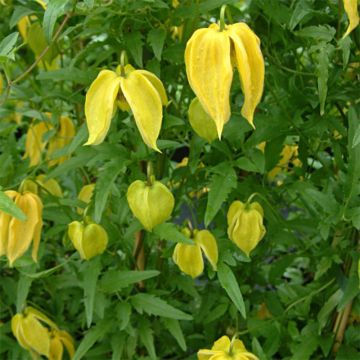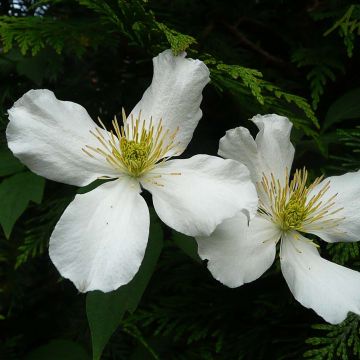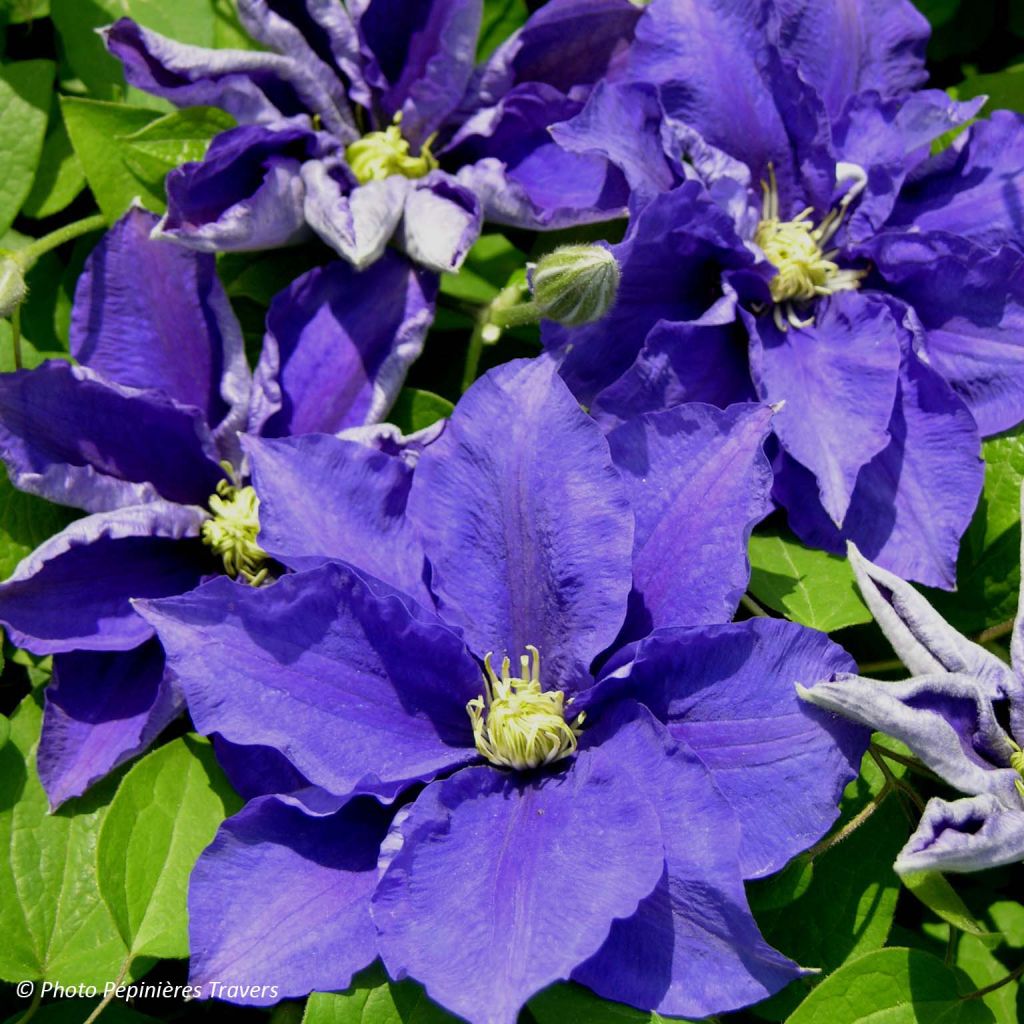

Clematis patens Kingfisher
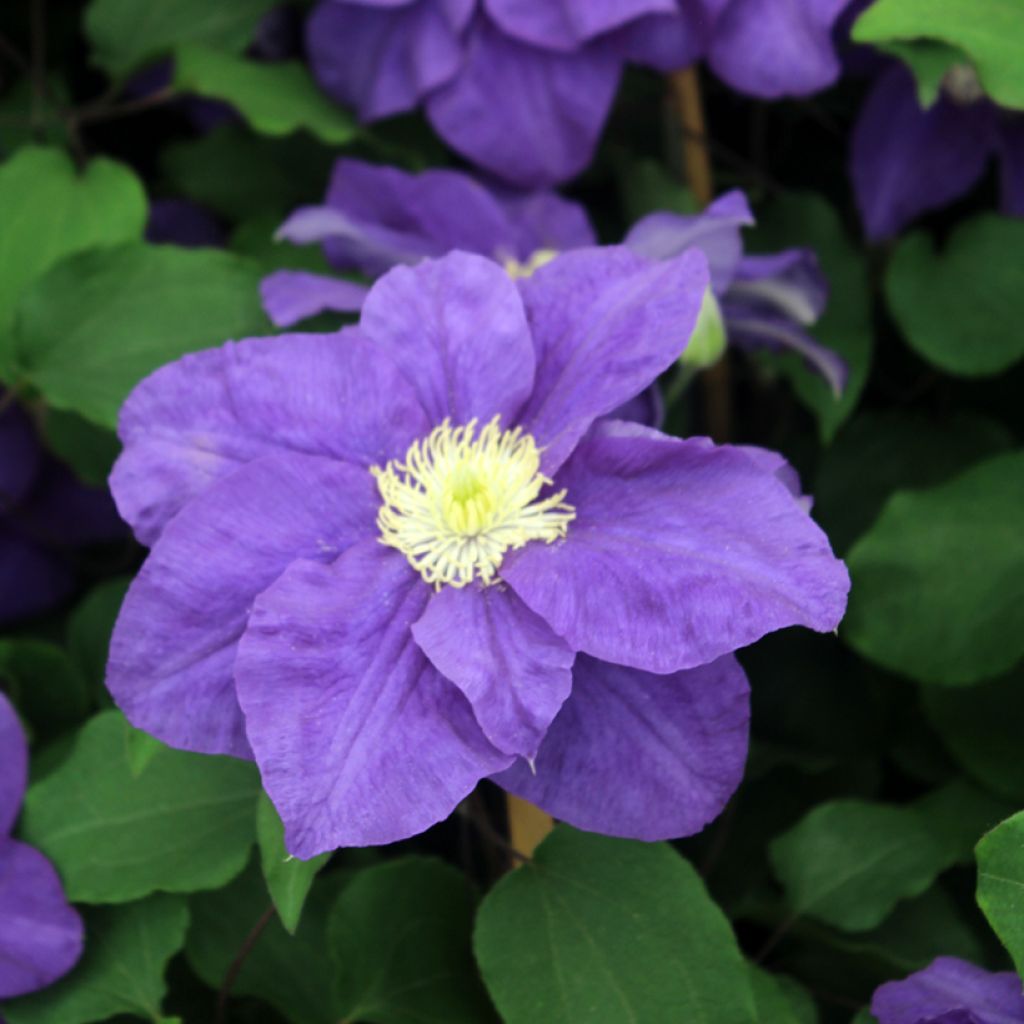

Clematis patens Kingfisher
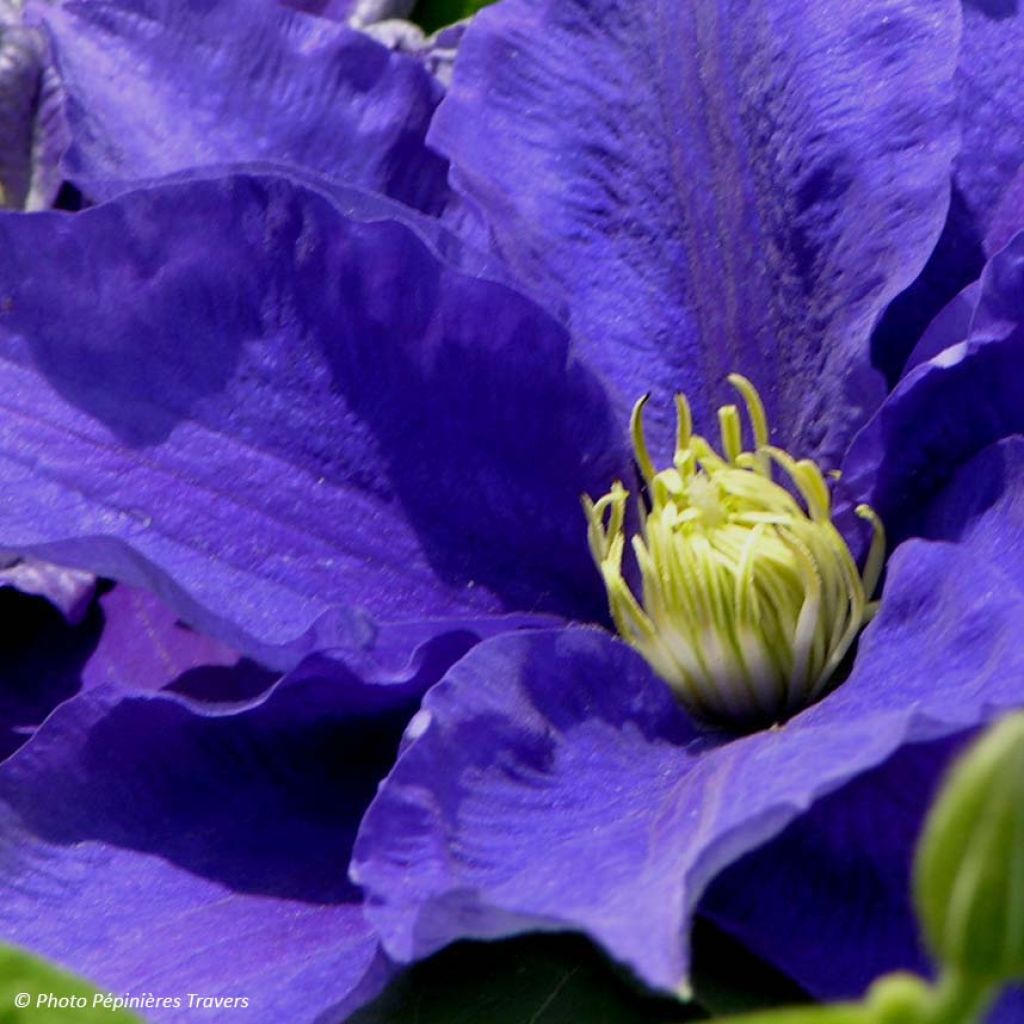

Clematis patens Kingfisher
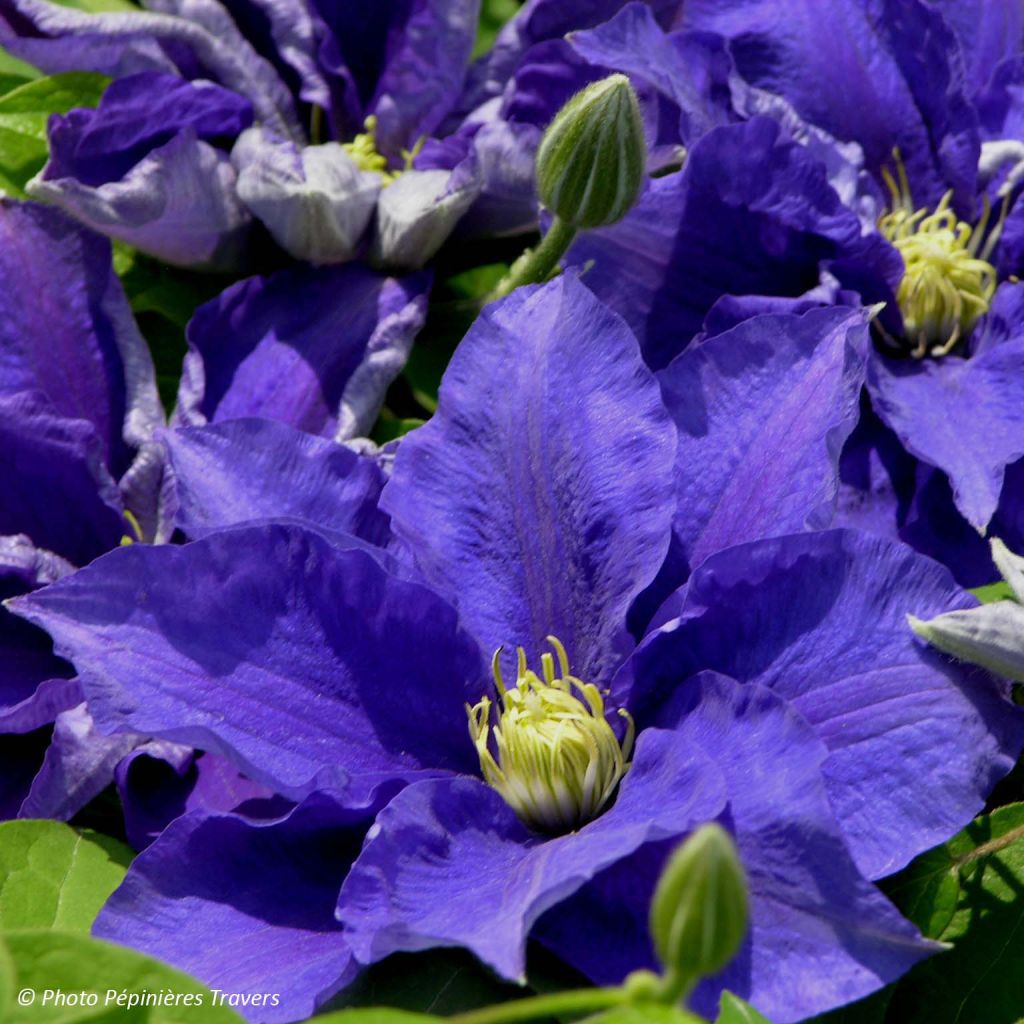

Clematis patens Kingfisher
Clematis patens Kingfisher
Clematis patens Kingfisher Evipo037
Early Large-flowered Clematis
Received well, but I can't tell you anything as we planted it upon reception. It's too early to say what we think of it. The clematis is very beautiful to look at, and I'm eagerly looking forward to seeing it in full bloom.
nicole, 23/06/2020
Why not try an alternative variety in stock?
View all →This plant carries a 6 months recovery warranty
More information
We guarantee the quality of our plants for a full growing cycle, and will replace at our expense any plant that fails to recover under normal climatic and planting conditions.
From €5.90 for pickup delivery and €6.90 for home delivery
Express home delivery from €8.90.
Does this plant fit my garden?
Set up your Plantfit profile →
Description
The Clematis 'Kingfisher' is a recent and floriferous variety of Clematis, specifically selected for its suitability for pot cultivation and for its compact growth, well suited to small spaces. With a compact and sturdy habit, this pretty climbing plant produces very beautiful flowers of a bright blue-violet illuminated by a heart of white stamens and yellow styles. It blooms in spring, and again in late summer, almost along its entire height. It will create a sensation on the terrace, as well as in the ground, on a fence, a small tree or a trellis.
Clematis belong to the family of Ranunculaceae. They are found in both hemispheres, particularly in Europe, the Himalayas, China, Australia, North and Central America. The variety 'Kingfisher', obtained in 2007 in England, is a perfectly perennial and hardy, semi-woody and climbing plant, which will reach an average height of 2m (7ft), with a spread that is almost equivalent. It belongs to the group of large-flowered patent clematis.
This clematis bears flowers measuring 10 to 15 cm (4 to 6in) in diameter that appear on the previous year's wood in spring, in May-June, and then a second time on the current year's growth, in September. The flowers are solitary or grouped in clusters and abundant. They are erect and have a wide corolla composed of 6 to 8 overlapping petals. They are slightly undulate at the edges, tinted with violet-blue and a darker violet in the middle on the upper side, while the underside is violet-blue with a lighter violet-blue central line mixed with white. The centre of the corolla is occupied by a bouquet of cream-white stamens and yellow pistils. The flowering is followed by decorative, feathery, silver-grey fruits that persist until winter. The leaves, deciduous, are sometimes single, sometimes alternate and divided into 3 rounded leaflets. They measure an average of 10 cm (4in), are glabrous and of a medium green color. This clematis clings to the support or host plant through petioles transformed into tendrils.
'Kingfisher', with its generous flowering, vigour and compact growth, is perfect in a large pot on the terrace where it will live for many years. Plant your clematis alongside your climbing roses or other climbing plants, to extend the flowering of your walls and pergolas until the end of summer. It is a genus rich in diversity, with varieties available in all colours, shapes and sizes. Take advantage of their easy cultivation to give your garden a romantic and bohemian touch. They also love to climb on bushes, and pair well with white, red or pink flowers: don't hesitate to combine several varieties with simultaneous or staggered flowering times. 'Kingfisher's blue flowers are enhanced by the autumn foliage, and look absolutely stunning against the large scarlet to garnet leaves of the red vine, or against the flamboyant colours that the smoke tree takes on from mid-September.
Tips: Avoid excessive fertilisation that stimulates foliage at the expense of flowers. Do not mulch to avoid excessive moisture that promotes wilt disease.
Report an error about the product description
Clematis patens Kingfisher in pictures
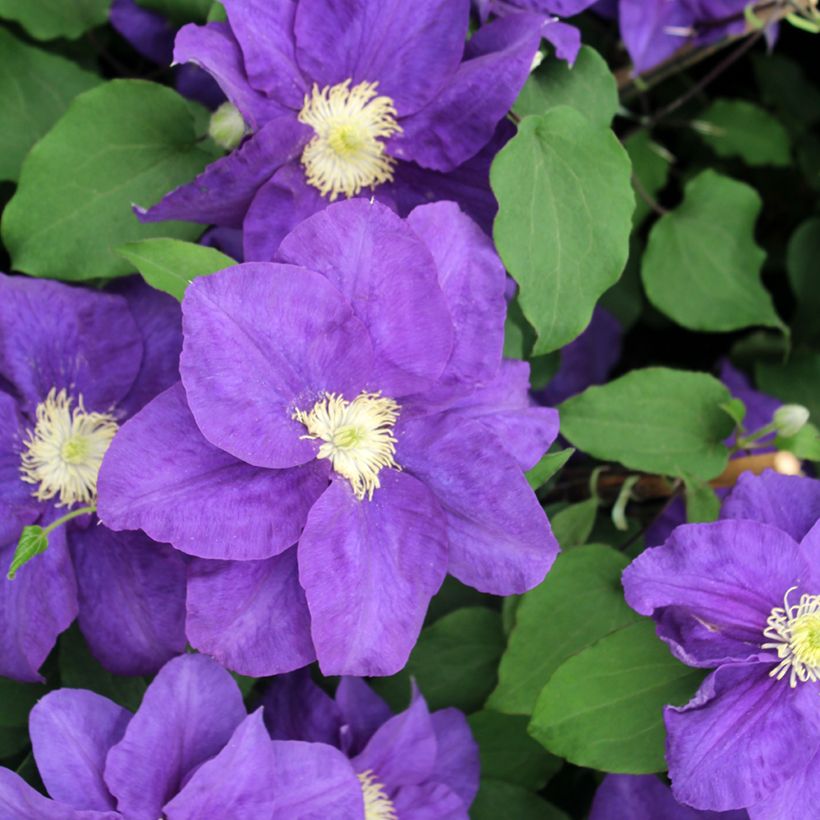

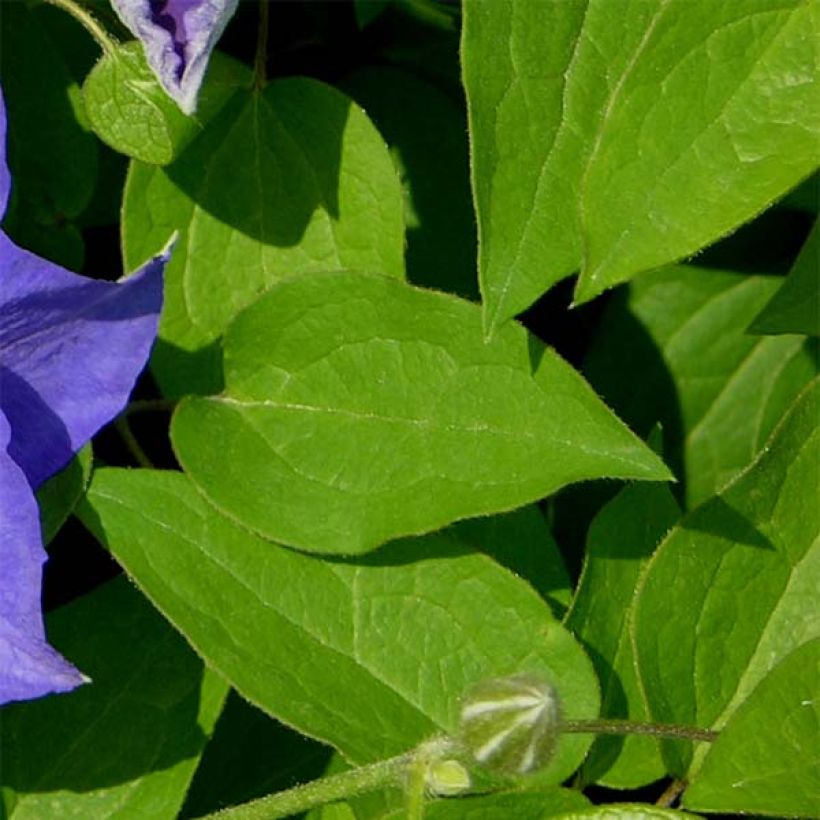

Plant habit
Flowering
Foliage
Botanical data
Clematis
patens
Kingfisher Evipo037
Ranunculaceae
Early Large-flowered Clematis
Cultivar or hybrid
Other Clematis Patens
Planting and care
The Clematis 'Kingfisher' will appreciate a sunny or lightly shaded position near a tree. Plant it in a fertile, humus-rich soil, especially well-drained, shading the roots and base of the stem (with a flat tile, for example). In general, clematis wilts in excessively moist soil and hot weather, falling victim to a terrible disease commonly known as wilt. Plant it by covering the root ball with 3 cm (1in) of soil, in soil worked to a depth of 20 cm (8in), lightened with good compost and coarse sand. After planting, cut back the clematis stems to about 30 cm (12in) above a nice pair of buds. During the first few weeks, water regularly. However, be careful not to let the water stagnate as this can cause a fungus to develop at the collar. Mulch all clematis plants in February with garden compost or well-rotted manure, avoiding direct contact with the stems. Train the stems, without squeezing them, until the plant can climb by itself. Clematis also like to grow freely on neighbouring plants. Remove dead or weak stems in March, before the vegetation resumes, and cut back all others above 2 healthy buds. They will produce secondary stems that will bear lateral shoots flowering in May. Remove faded flowers. The young shoots will bloom late in the season.
After a few years, cover the base of your climbing clematis with a small mound of soil, in order to reduce the risk of wilting, while promoting the growth of vigorous shoots from the stump. Voles and grey worms can attack clematis and devour the stems. Aphids and greenhouse whiteflies are also potential parasites of clematis.
Planting period
Intended location
Care
-
, onOrder confirmed
Reply from on Promesse de fleurs
Clematis
Haven't found what you were looking for?
Hardiness is the lowest winter temperature a plant can endure without suffering serious damage or even dying. However, hardiness is affected by location (a sheltered area, such as a patio), protection (winter cover) and soil type (hardiness is improved by well-drained soil).

Photo Sharing Terms & Conditions
In order to encourage gardeners to interact and share their experiences, Promesse de fleurs offers various media enabling content to be uploaded onto its Site - in particular via the ‘Photo sharing’ module.
The User agrees to refrain from:
- Posting any content that is illegal, prejudicial, insulting, racist, inciteful to hatred, revisionist, contrary to public decency, that infringes on privacy or on the privacy rights of third parties, in particular the publicity rights of persons and goods, intellectual property rights, or the right to privacy.
- Submitting content on behalf of a third party;
- Impersonate the identity of a third party and/or publish any personal information about a third party;
In general, the User undertakes to refrain from any unethical behaviour.
All Content (in particular text, comments, files, images, photos, videos, creative works, etc.), which may be subject to property or intellectual property rights, image or other private rights, shall remain the property of the User, subject to the limited rights granted by the terms of the licence granted by Promesse de fleurs as stated below. Users are at liberty to publish or not to publish such Content on the Site, notably via the ‘Photo Sharing’ facility, and accept that this Content shall be made public and freely accessible, notably on the Internet.
Users further acknowledge, undertake to have ,and guarantee that they hold all necessary rights and permissions to publish such material on the Site, in particular with regard to the legislation in force pertaining to any privacy, property, intellectual property, image, or contractual rights, or rights of any other nature. By publishing such Content on the Site, Users acknowledge accepting full liability as publishers of the Content within the meaning of the law, and grant Promesse de fleurs, free of charge, an inclusive, worldwide licence for the said Content for the entire duration of its publication, including all reproduction, representation, up/downloading, displaying, performing, transmission, and storage rights.
Users also grant permission for their name to be linked to the Content and accept that this link may not always be made available.
By engaging in posting material, Users consent to their Content becoming automatically accessible on the Internet, in particular on other sites and/or blogs and/or web pages of the Promesse de fleurs site, including in particular social pages and the Promesse de fleurs catalogue.
Users may secure the removal of entrusted content free of charge by issuing a simple request via our contact form.
The flowering period indicated on our website applies to countries and regions located in USDA zone 8 (France, the United Kingdom, Ireland, the Netherlands, etc.)
It will vary according to where you live:
- In zones 9 to 10 (Italy, Spain, Greece, etc.), flowering will occur about 2 to 4 weeks earlier.
- In zones 6 to 7 (Germany, Poland, Slovenia, and lower mountainous regions), flowering will be delayed by 2 to 3 weeks.
- In zone 5 (Central Europe, Scandinavia), blooming will be delayed by 3 to 5 weeks.
In temperate climates, pruning of spring-flowering shrubs (forsythia, spireas, etc.) should be done just after flowering.
Pruning of summer-flowering shrubs (Indian Lilac, Perovskia, etc.) can be done in winter or spring.
In cold regions as well as with frost-sensitive plants, avoid pruning too early when severe frosts may still occur.
The planting period indicated on our website applies to countries and regions located in USDA zone 8 (France, United Kingdom, Ireland, Netherlands).
It will vary according to where you live:
- In Mediterranean zones (Marseille, Madrid, Milan, etc.), autumn and winter are the best planting periods.
- In continental zones (Strasbourg, Munich, Vienna, etc.), delay planting by 2 to 3 weeks in spring and bring it forward by 2 to 4 weeks in autumn.
- In mountainous regions (the Alps, Pyrenees, Carpathians, etc.), it is best to plant in late spring (May-June) or late summer (August-September).
The harvesting period indicated on our website applies to countries and regions in USDA zone 8 (France, England, Ireland, the Netherlands).
In colder areas (Scandinavia, Poland, Austria...) fruit and vegetable harvests are likely to be delayed by 3-4 weeks.
In warmer areas (Italy, Spain, Greece, etc.), harvesting will probably take place earlier, depending on weather conditions.
The sowing periods indicated on our website apply to countries and regions within USDA Zone 8 (France, UK, Ireland, Netherlands).
In colder areas (Scandinavia, Poland, Austria...), delay any outdoor sowing by 3-4 weeks, or sow under glass.
In warmer climes (Italy, Spain, Greece, etc.), bring outdoor sowing forward by a few weeks.


































